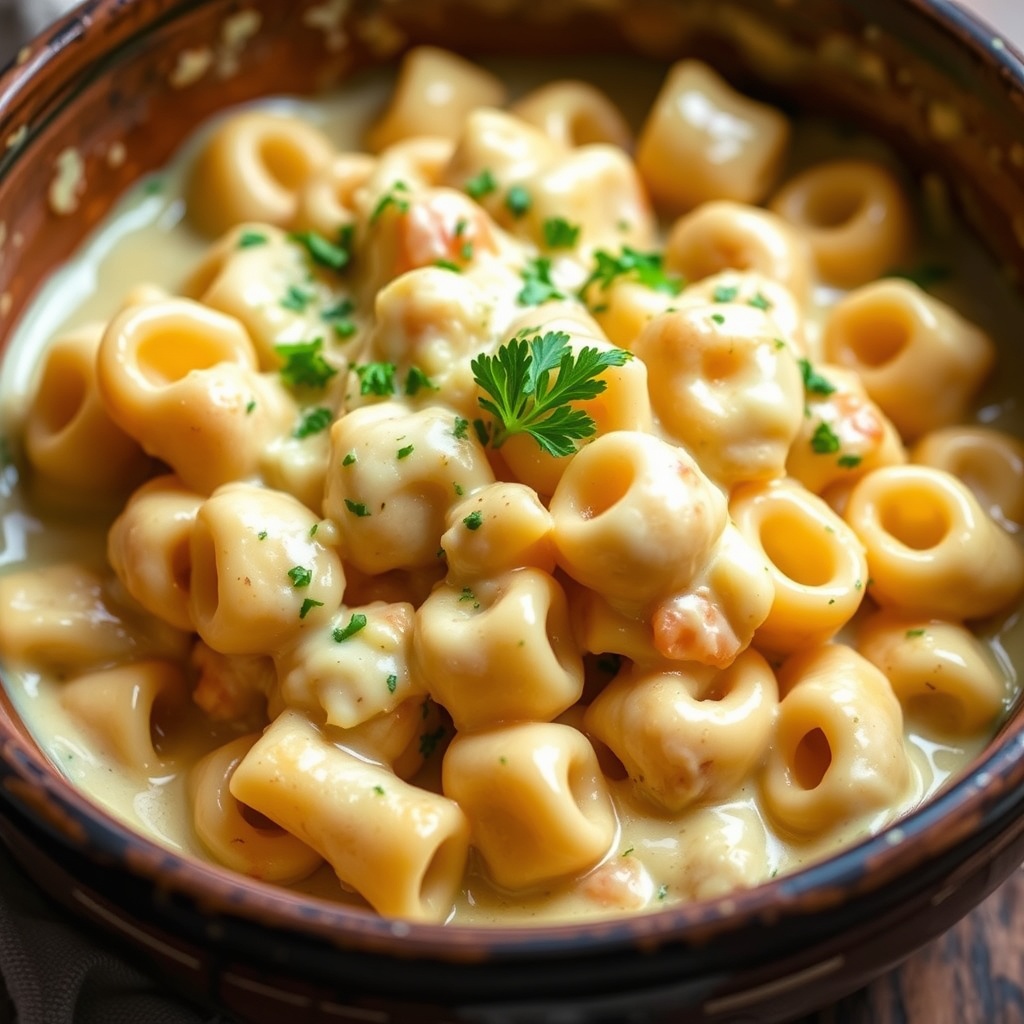Mac and cheese is the ultimate comfort food that transcends borders and generations. Its creamy texture and cheesy flavor bring people together, making it a staple on dinner tables worldwide. While many people focus on the type of cheese used in the recipe, Tini—a culinary expert known for her innovative take on classic dishes—shows us that the pasta shape is just as important.
Table of Contents
In Tini’s signature mac and cheese recipe, cavatappi pasta is the star. This spiral-shaped pasta elevates the dish to new heights, thanks to its ability to hold sauce, add texture, and create an aesthetically pleasing presentation. But why cavatappi, and how does it enhance the mac and cheese experience? This article explores the unique features of cavatappi pasta, its role in Tini’s recipe, and how you can recreate her famous mac and cheese at home.
In addition to detailing Tini’s recipe, we’ll also look at creative ways to adapt it, whether you’re looking for gluten-free options, vegan alternatives, or indulgent twists with added toppings. Let’s dive into the world of mac and cheese and uncover the secret to Tini’s perfect dish!
Why Pasta Shape Matters in Mac and Cheese
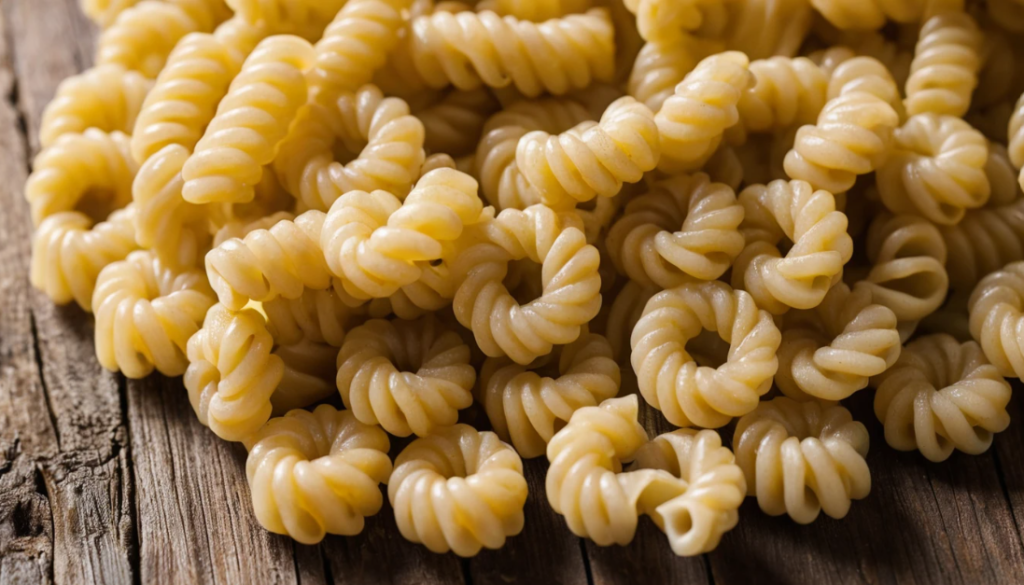
When it comes to mac and cheese, the type of pasta you choose significantly impacts the dish’s overall texture, flavor distribution, and eating experience. Many people overlook this critical detail, opting for traditional elbow macaroni without considering the alternatives. Tini, however, demonstrates that selecting the right pasta shape is essential for creating a truly memorable mac and cheese.
The Role of Pasta in Mac and Cheese
Pasta isn’t just a vessel for the cheese sauce; it’s a core component of the dish. A well-chosen pasta shape enhances the texture, balances the sauce-to-pasta ratio, and adds a delightful bite. For mac and cheese, the pasta needs to hold onto the cheese sauce effectively, ensuring every bite is flavorful and satisfying.
Common Pasta Shapes Used for Mac and Cheese
While elbow macaroni is the traditional choice for mac and cheese, many other shapes can be used to add variety and elevate the dish:
- Shells: Their cup-like shape traps the sauce, providing bursts of cheesy goodness.
- Penne: Smooth and tubular, penne is sturdy but often lacks the grip needed to hold the sauce perfectly.
- Fusilli: Spiral-shaped like cavatappi, fusilli is another excellent choice for sauce retention.
- Rigatoni: Larger and ridged, it adds a hearty texture to mac and cheese.
Each of these shapes has its strengths, but none combine sauce retention, visual appeal, and a satisfying bite quite like cavatappi.
Why Cavatappi Stands Out
Cavatappi pasta, known for its corkscrew-like spiral shape, is a game-changer in the mac and cheese world. Here’s why it’s Tini’s preferred choice:
- Ridged Surface: The ridges along the pasta’s spiral cling to the cheese sauce, ensuring maximum flavor in every bite.
- Hollow Center: The hollow tube in cavatappi allows sauce to seep inside, creating layers of flavor with every forkful.
- Spiral Design: The unique spiral design not only looks appealing but also ensures that the sauce is evenly distributed across the dish.
- Perfect Texture: Cavatappi has a firmer bite compared to smaller shapes like elbows, adding a satisfying chew to the creamy dish.
Comparing Cavatappi to Elbow Macaroni
Tini’s choice of cavatappi over traditional elbow macaroni boils down to its superior ability to hold sauce and provide a better texture. While elbow macaroni is small and simple, cavatappi offers:
- Greater Surface Area: This allows it to carry more sauce, making every bite creamier.
- Enhanced Presentation: Its spiral shape elevates the dish’s visual appeal, making it Instagram-worthy.
- Improved Mouthfeel: The firm, spiral texture adds a dynamic contrast to the creaminess of the cheese sauce.
By choosing cavatappi, Tini ensures her mac and cheese isn’t just a meal—it’s an experience.
Why Does Tini Choose Cavatappi?
Cavatappi is not just any pasta—it’s the secret ingredient that transforms Tini’s mac and cheese into a dish loved by her followers. The combination of its unique design, sauce-retaining properties, and versatility makes it an ideal choice for this comfort food. Let’s take a closer look at why Tini swears by cavatappi.
The Unique Features of Cavatappi Pasta
Cavatappi’s distinctive corkscrew shape and ridged surface set it apart from other pasta types. These features provide several advantages:
- Spiral Design: Its spiral shape allows for better mixing of sauce and pasta, ensuring every piece is coated evenly.
- Ridged Texture: The ridges enhance the pasta’s ability to cling to thick, creamy sauces, making every bite more flavorful.
- Hollow Center: The hollow core traps sauce inside, delivering bursts of flavor with each forkful.
These qualities make cavatappi not just functional but also a delight to eat. It’s this attention to detail that elevates Tini’s mac and cheese above the ordinary.
Enhancing the Mac and Cheese Experience
Cavatappi plays a significant role in creating the luxurious texture and taste of Tini’s mac and cheese. Here’s how:
- Cheese Sauce Distribution: The spiral shape ensures the cheese sauce doesn’t pool at the bottom of the dish. Instead, it clings to the pasta, distributing flavor evenly.
- Perfect Bite Size: Cavatappi is slightly larger than elbow macaroni, offering a heartier bite that complements the creamy sauce.
- Consistency in Every Mouthful: The ridges and hollow core ensure that each piece of pasta delivers the same cheesy goodness, making every bite as satisfying as the last.
Aesthetic Appeal for Presentation
In addition to its functional benefits, cavatappi adds visual appeal to Tini’s mac and cheese. Its curly shape gives the dish a whimsical, elegant look that’s perfect for sharing on social media or serving at dinner parties. Presentation is key, and cavatappi ensures the dish looks as good as it tastes.
Versatility Beyond Mac and Cheese
Another reason Tini chooses cavatappi is its versatility. While it shines in mac and cheese, cavatappi is also perfect for:
- Baked Pasta Dishes: Its sturdy shape holds up well in the oven, making it ideal for casseroles.
- Cold Pasta Salads: The ridges and hollow core capture dressings and toppings beautifully.
- Hearty Sauces: From marinara to Alfredo, cavatappi pairs wonderfully with a variety of sauces.
This adaptability ensures that any leftover pasta can be repurposed for another delicious meal.
How to Choose the Best Cavatappi
When shopping for cavatappi, Tini recommends opting for high-quality pasta made from durum wheat semolina. This type of pasta has a firmer texture and better flavor, which contributes to the overall quality of the dish. Look for brands that use traditional bronze dies for shaping, as these create rougher surfaces that hold sauce even better.
How to Cook Cavatappi for Mac and Cheese
The key to achieving Tini’s perfect mac and cheese lies not only in the choice of cavatappi pasta but also in how it is cooked. Proper preparation ensures that the pasta maintains its structure and perfectly complements the creamy cheese sauce. Here’s a detailed guide to cooking cavatappi pasta for the best mac and cheese experience.
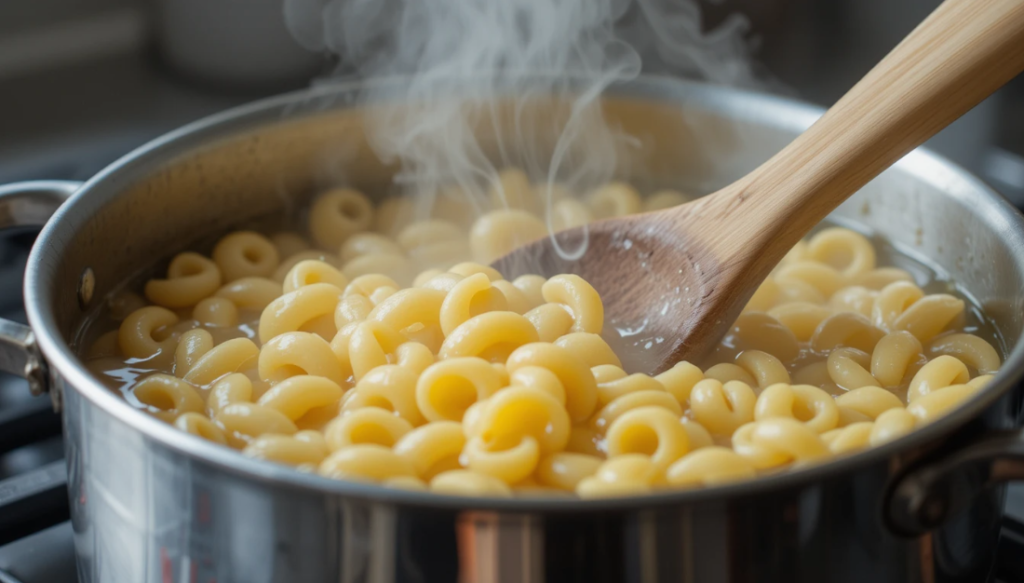
Step-by-Step Instructions for Cooking Cavatappi
- Boil Water:
- Use a large pot and fill it with enough water to allow the pasta to move freely during cooking. A general rule is to use at least 4-6 quarts of water for every pound of pasta.
- Add Salt:
- Generously salt the water before it boils. This step is crucial because it infuses the pasta with flavor from the inside out. Aim for water that tastes “as salty as the sea.”
- Cook the Pasta:
- Once the water reaches a rolling boil, add the cavatappi. Stir immediately to prevent the pasta from sticking together.
- Check for Al Dente:
- Follow the cooking time recommended on the package but start checking the pasta a minute or two before the time is up. Al dente cavatappi should be firm to the bite, with a slight resistance in the center.
- Reserve Pasta Water:
- Before draining, reserve a cup of pasta water. This starchy water can be used later to adjust the consistency of the cheese sauce if needed.
- Drain and Rinse (Optional):
- Drain the cavatappi in a colander. For mac and cheese, do not rinse the pasta. The starch on the surface helps the cheese sauce adhere better.
Tips for Perfect Cavatappi
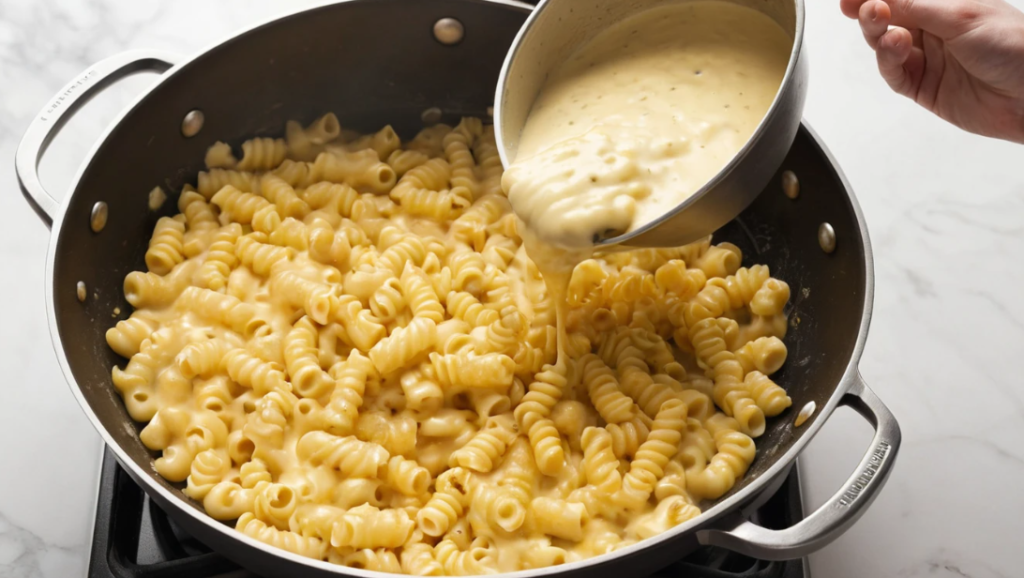
- Cook in Batches: If making a large quantity, avoid overcrowding the pot to ensure the pasta cooks evenly.
- Undercook Slightly for Baked Dishes: If you plan to bake the mac and cheese, cook the cavatappi 1-2 minutes less than al dente to prevent overcooking during baking.
- Use High-Quality Pasta: Opt for cavatappi made from durum wheat semolina for a firm texture that holds up well to rich sauces.
Preparing Cavatappi for Tini’s Mac and Cheese
Once the cavatappi is cooked to perfection, it’s time to combine it with the cheese sauce. Tini’s method emphasizes mixing the hot pasta with freshly made cheese sauce immediately after draining. This ensures the sauce clings to every ridge and spiral of the pasta, creating a cohesive and flavorful dish.
Common Mistakes to Avoid when cooking Tini’s Mac and Cheese
- Overcooking the Pasta: Overcooked cavatappi becomes mushy and loses its ability to hold sauce effectively. Always aim for al dente.
- Skipping the Salt: Pasta water that isn’t salted results in bland pasta, which no amount of cheese sauce can fully compensate for.
- Rinsing with Water: Rinsing washes away the starches that help the sauce adhere to the pasta. Skip this step unless the recipe explicitly calls for it.
By following these cooking techniques, you’ll ensure that the cavatappi serves as the perfect foundation for your mac and cheese masterpiece.
Click here if you want to try this Tini’s Mac and Cheese Recipe
Frequently Asked Questions (FAQs)
Mac and cheese may seem straightforward, but home cooks often have questions when attempting to elevate this classic dish. Here are some of the most common questions, answered with tips inspired by Tini’s approach to mac and cheese.
What other pasta shapes can I use for mac and cheese if I don’t have cavatappi?
While cavatappi is ideal for mac and cheese due to its ridges and spiral shape, other pasta shapes can also work well:
- Fusilli: Similar in shape to cavatappi, it captures cheese sauce effectively.
- Penne or Rigatoni: Their hollow tubes hold creamy sauces but may lack the texture that cavatappi offers.
- Shells: Excellent for trapping cheese sauce in their curved shape, making every bite flavorful.
- Elbow Macaroni: A classic option that is widely available and works well for traditional recipes.
Can I make mac and cheese ahead of time?
Yes, mac and cheese can be prepared ahead of time with some precautions:
- Prepare the Pasta and Sauce Separately: Store the cooked pasta and cheese sauce separately to prevent the pasta from absorbing too much sauce and becoming mushy.
- Bake Just Before Serving: If you plan to bake the dish, assemble it but don’t add the breadcrumb topping until right before baking. This prevents sogginess.
- Reheat Gently: Use low heat when reheating to preserve the creamy texture. Add a splash of milk or reserved pasta water to loosen the sauce if needed.
How can I reheat mac and cheese without drying it out?
To reheat mac and cheese:
- On the Stovetop: Place it in a saucepan over low heat. Add a splash of milk or cream, stirring frequently to restore the sauce’s creaminess.
- In the Oven: Cover the dish with aluminum foil and bake at 350°F (175°C) for 15-20 minutes. Add a bit of milk or cream if the sauce seems dry.
- In the Microwave: Heat in short intervals, stirring in between, and add liquid as needed to maintain the texture.
Can cavatappi pasta be substituted in other recipes?
Absolutely! Cavatappi’s spiral shape and sauce-holding capabilities make it a versatile choice for various dishes, including:
- Pasta Salads: Its ridges cling to dressings and other ingredients.
- Baked Ziti Alternatives: Substitute cavatappi for traditional ziti or penne for a unique twist.
- Soup Additions: Use it in hearty soups like minestrone for a satisfying texture.
Is cavatappi readily available in stores?
Yes, cavatappi is widely available in most grocery stores. It can usually be found in the pasta aisle, either as “cavatappi” or under other names like “corkscrew pasta.” Look for high-quality brands made from durum wheat semolina for the best results.
How do I adapt Tini’s mac and cheese for a gluten-free diet?
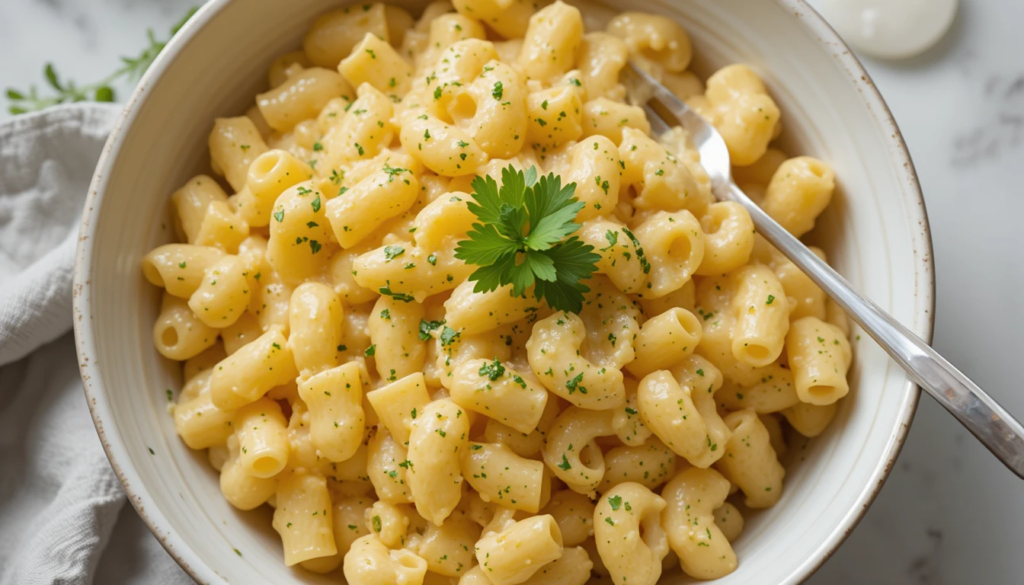
To make Tini’s recipe gluten-free:
- Use Gluten-Free Pasta: Many brands offer gluten-free cavatappi or similar shapes made from rice, corn, or quinoa.
- Substitute the Flour in the Roux: Replace all-purpose flour with a gluten-free alternative like rice flour, cornstarch, or a gluten-free flour blend.
- Check Labels: Ensure all ingredients, including cheese and breadcrumbs, are certified gluten-free.
Conclusion
Tini’s choice of cavatappi pasta brings her mac and cheese to a new level of indulgence, seamlessly combining texture, flavor, and visual appeal in one dish. Specifically, its ridges, hollow center, and spiral shape make it the perfect vehicle for the rich, creamy cheese sauce that ultimately defines this comfort food classic. Consequently, each bite is elevated by the pasta’s ability to hold and absorb the sauce, ensuring a truly satisfying experience.
By following Tini’s recipe and incorporating your own variations, you can create a mac and cheese masterpiece tailored to your taste and dietary needs. Whether you stick to her original creation or experiment with proteins, vegetables, or toppings, cavatappi pasta ensures that every bite is satisfying and delicious.
So grab your ingredients, boil that pot of salted water, and get ready to experience the ultimate mac and cheese. With Tini’s tips and techniques, you’ll be serving up a dish that’s bound to become a favorite in your household.

